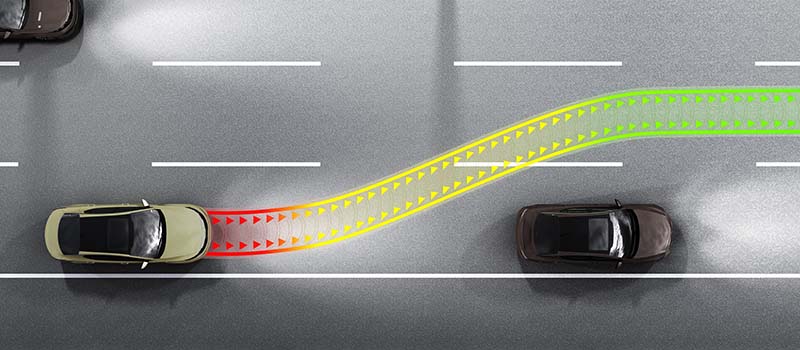Tips For Changing Lanes And Merging Safely
Tips For Changing Lanes And Merging Safely

Tips For Changing Lanes And Merging Safely
Lane Changing Basics
- Use your turn signal.
Using your turn signal is the best way to let other drivers know that you plan to change lanes. In most states, you are legally required to activate your turn signal at least 100 feet before making your move. Check your state’s Department or Bureau of Motor Vehicles website to determine the exact requirements for your location. Whether you are signaling your intent to change lanes, merge into traffic or turn into a parking spot, using your signal can help keep you safe and ticket-free. If you’re stuck in traffic, using your turn signal is your best way to “ask” another driver to let you into the other lane.
- Check your mirrors.
After signaling, look in your rearview and side mirrors to make sure you have enough space to change lanes. If the lane you’re merging into has a car in it, be sure to wait until you can see the entire vehicle and a few feet of road in front of it in the mirror.
If the other car is moving at or below your speed, there should be plenty of room for you to change lanes. It is crucial that you watch the speed of the car you’re trying to merge ahead of in order to change lanes safely. If their car accelerates, you should let them pass you before changing lanes. Some states allow drivers to speed in order to pass slower moving vehicles, but it isn’t always the best idea. Increasing your speed can reduce your risk of an accident, and you should do so with caution.
- Always check your blind spot.
Even after checking your mirrors, remember that there is a spot behind the car that you can’t see, and a car or motorcycle could be there! As soon as you check your mirrors, look over your shoulder and check your blind spot. Remember that it is easy to miss smaller objects, like cyclists, so be sure to look closely. Similarly, you can avoid getting hit by another vehicle by moving out of their blind spot as quickly as you can.
- Move into the lane.
Once it is safe, maintain your speed and move into the lane smoothly. Don’t hit the gas or jerk the wheel, or you put yourself at risk of an accident!
- Turn your turn signal off.
As soon as you are in the lane you want to be in, be sure to turn off your turn signal.
Things to Avoid When Changing Lanes
- Taking too long to follow all of the steps.
To change lanes safely, you should complete each step within a few seconds of the other. Hesitating between steps can be dangerous, especially since things change quickly on the road!
- Forgetting to use your turn signal and forgetting to turn it off.
Always use your turn signal to let other cars know you’re planning to change lanes. Don’t forget to turn it off after you’ve made your move, because it can confuse other drivers as to what your next move on the road may be.
- Slowing down or hitting the brakes before you change lanes.
Make your best effort to go with the flow of traffic when you’re changing lanes, and try to avoid suddenly slowing down or stopping during your effort to move into a different lane. The driver behind you might not be paying close enough attention, and you could end up getting involved in a rear-end collision.
- Drifting into another lane when you’re checking your blind spot.
Check your mirrors, then quickly check your blind spot. The longer you look over your shoulder, the more likely you are to drift into another lane. A very brief blind spot check is all you need!
- Merging onto the highway before the car in front of you merges.
When you merge onto a highway, the cars that are already moving have the right of way, which means they are not legally required to make space for you to enter the lane. You are responsible for finding a gap. While you are watching the cars on the highway, don’t forget to pay attention to the cars in front of you. If you aren’t watching closely, you could end up rear ending another vehicle. It’s safer to let the car in front of you merge first, then look for your chance to merge into traffic.
Following some basic driving rules can help you safely merge and change lanes on even the busiest highways, but even if you’re doing your best to stay protected, the other drivers on the road may not be paying close attention. Be sure to protect yourself in the event of unexpected collisions with the proper insurance coverage, including collision coverage. If you’re unsure whether you have the insurance you need for your normal driving conditions, reach out to your local agent for help finding the right coverage at a price that fits your budget!
